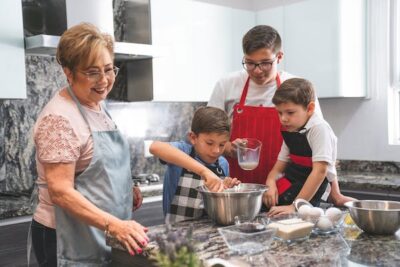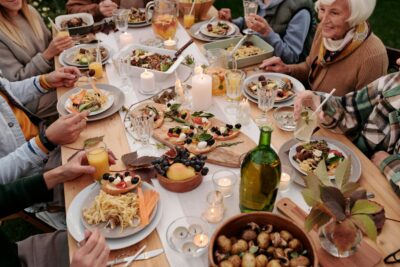In recent years, there has been a noticeable shift in how families choose to live together. With the rise of multi-generational living arrangements, architects and interior designers are adapting to create spaces that accommodate the needs of different generations under one roof. From providing privacy to fostering togetherness, the design of such homes plays a crucial role in ensuring harmony and functionality for all family members. In this blog post, we’ll explore some innovative home design options tailored for multi-generational living.
1. Flexible Floor Plans
Flexible floor plans are the cornerstone of multi-generational home design. They allow for versatile use of space, catering to the changing needs of the family over time. Design elements such as movable walls, sliding partitions, and pocket doors enable residents to customize their living areas according to privacy requirements or communal activities.
2. Dual Master Suites
Incorporating dual master suites provides autonomy and privacy for multiple generations within the household. These suites typically feature spacious bedrooms, en-suite bathrooms, and sometimes even separate living areas or kitchenettes. This setup allows grandparents, parents, and children to enjoy their own private retreats while still being part of the same household.
3. Accessory Dwelling Units (ADUs)
ADUs, also known as granny flats or in-law suites, are self-contained living units located on the same property as the main house. These units can be attached, detached, or converted from existing space such as a garage or basement. ADUs offer independent living quarters for older family members or adult children while maintaining proximity to the main household for easy interaction and support. Regulations regarding ADUs vary by municipality so be sure to do your research.
4. Universal Design Principles
Integrating universal design principles ensures that the home is accessible and usable by people of all ages and abilities. Features such as step-free entrances, wide doorways, lever handles, and grab bars in bathrooms enhance safety and convenience for elderly residents while remaining seamless and aesthetically pleasing for everyone.

5. Shared Living Spaces
While privacy is important, shared living spaces play a crucial role in fostering family bonding and social interaction. Designing open-plan kitchens, dining areas, and living rooms encourages spontaneous gatherings and facilitates quality time spent together. Thoughtful design touches like cozy seating areas, game rooms, or outdoor spaces further promote family togetherness.
6. Separate Entrances
Providing separate entrances for different generations enhances privacy and independence within the home. This design feature allows family members to come and go without disrupting each other’s routines. Whether it’s a private entrance to an ADU or a separate entrance for the main house, this design element contributes to a harmonious living experience.
7. Outdoor Retreats
Outdoor spaces are an extension of the home and can be designed to accommodate multi-generational living. Creating separate outdoor retreats or gathering areas allows each generation to enjoy nature and relaxation in their own way. Whether it’s a serene garden for the elderly, a playground for children, or a patio for family barbecues, outdoor spaces contribute to the overall well-being and enjoyment of the home.

In conclusion, designing a home for multi-generational living requires careful consideration of the diverse needs and preferences of each family member. By incorporating flexible floor plans, dual master suites, ADUs, universal design principles, shared living spaces, separate entrances, and outdoor retreats, architects and designers can create homes that promote harmony, functionality, and togetherness for generations to come.
Class-Harlan Real Estate has been serving the real estate needs of the community since 1963. Our team of experienced Realtors strive to exceed their clients expectations with professionalism and integrity seven days a week. For real estate assistance, please call Class-Harlan Real Estate at 215-348-8111 or Meet The Team HERE
